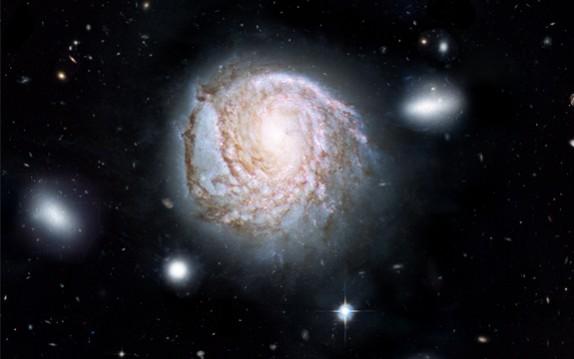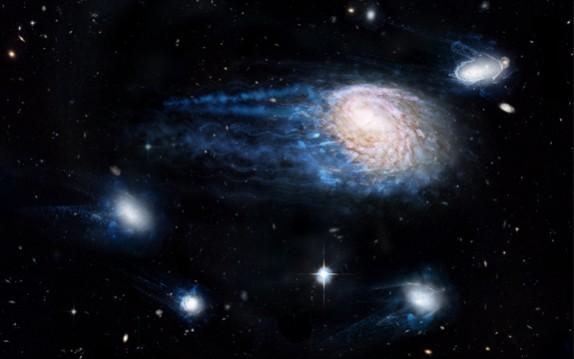
New research has solved the mystery behind the early deaths of galaxies. A galaxy is said to die when the process of star formation ceases.
Also Read: Atmosphere on Mars could host microbes, scientists have discovered
The cessation of the star-forming process results in the transformation of stars into dense clouds of gas which cool, and condense into compact and solid objects.
An international team of researchers from the International Centre for Radio Astronomy Research (ICRAR), carried out the study with Toby Brown as lead author.
This research aims at focusing on the process that causes the removal of gas from star-forming galaxies — a phenomenon also known as ram-pressure stripping — at a quick rate which could be the cause of galactic deaths.
"The image we paint as astronomers is that galaxies are embedded in clouds of dark matter that we call dark matter halos," Toby Brown said in a statement.
Comprising of stars, gas and debris, most galaxies appear to be stationary though they are actually moving at phenomenal speeds. This movement is actually an outcome of the gravitational pull of neighbouring galaxies or dark matter that comprises around 27% of the known universe. The rest of the galaxy is made up of 5% baryonic matter and 68% dark energy.
"During their lifetimes, galaxies can inhabit halos of different sizes, ranging from masses typical of our own Milky Way to halos thousands of times more massive," Brown explained.

A total of 11,000 galaxies were analysed by for the this study, and it was found that the gas, a crucial fuel in star formation, was being stripped away on a great volume scale throughout the local universe, resulting in an inability of the galaxies to create stars.
"As galaxies fall through these larger halos, the superheated intergalactic plasma between them removes their gas in a fast-acting process called ram-pressure stripping," he said further.
"You can think of it like a giant cosmic broom that comes through and physically sweeps the gas from the galaxies."
Majority of galaxies are known to exist in groups comprising two to 100 galaxies. Previously conducted research analysed this phenomenon in big groups of galaxy clusters, but according to the new study, most galaxies not present in huge clusters also die because of stripping, Dr Barbara Catinella, another ICRAR researcher and co-author of this study revealed.
"This paper demonstrates that the same process is operating in much smaller groups of just a few galaxies, together with much less dark matter," Brown says.
This finding was made with the help of the Sloan Digital Sky Survey, the largest optical galaxy survey ever carried out, along with the Arecibo Legacy Fast ALFA survey, the largest set of radio observations for atomic gas analyses in galaxies.
The entire process of galaxies losing gas and dying is also known as strangulation.
"Strangulation occurs when the gas is consumed to make stars faster than it's being replenished, so the galaxy starves to death," Brown said.
"It's a slow-acting process. On the contrary, what ram-pressure stripping does is bop the galaxy on the head and remove its gas very quickly—of the order of tens of millions of years—and astronomically speaking that's very fast," he concluded
The study was published in the journal Monthly Notices of the Royal Astronomical Society.

















